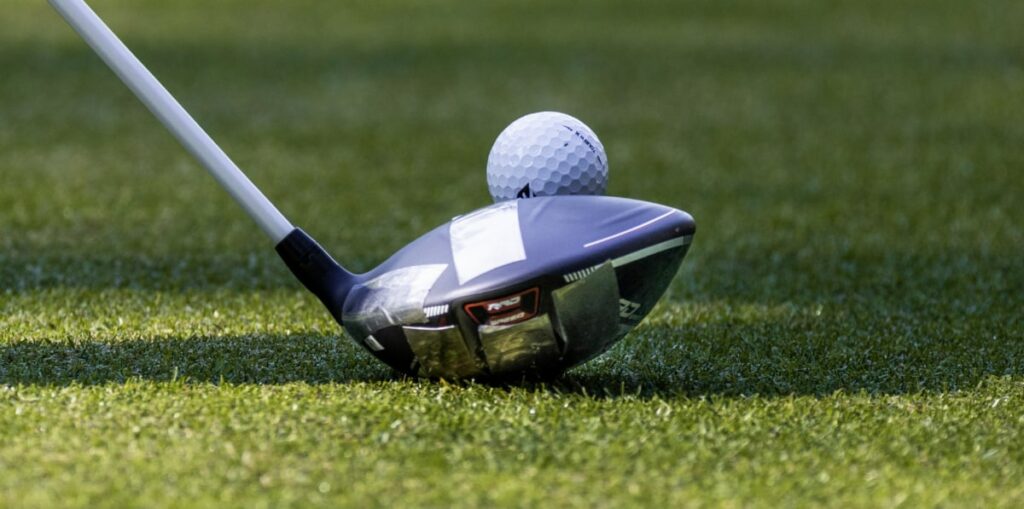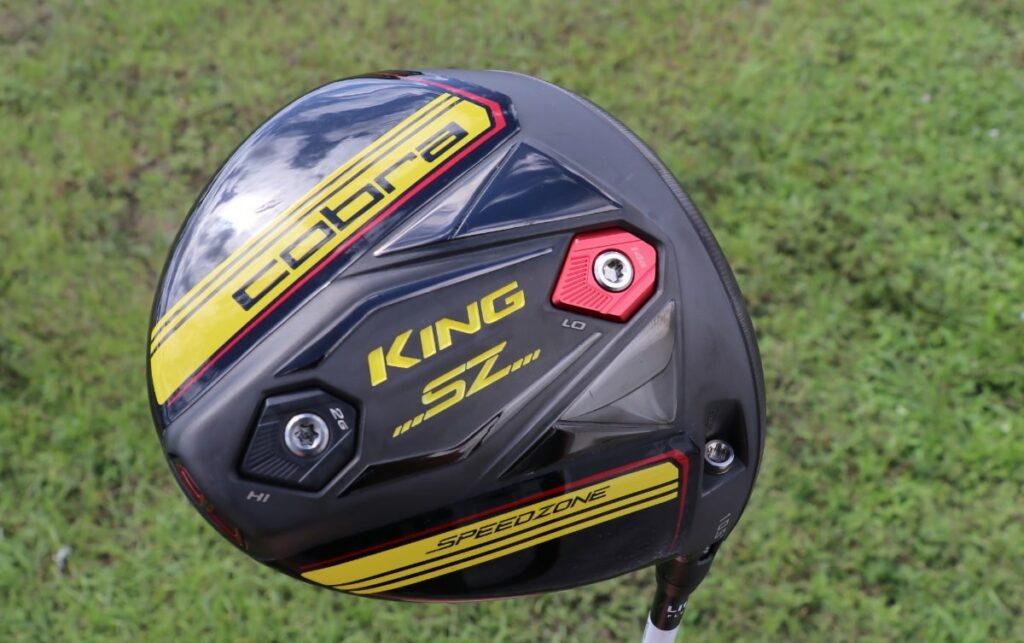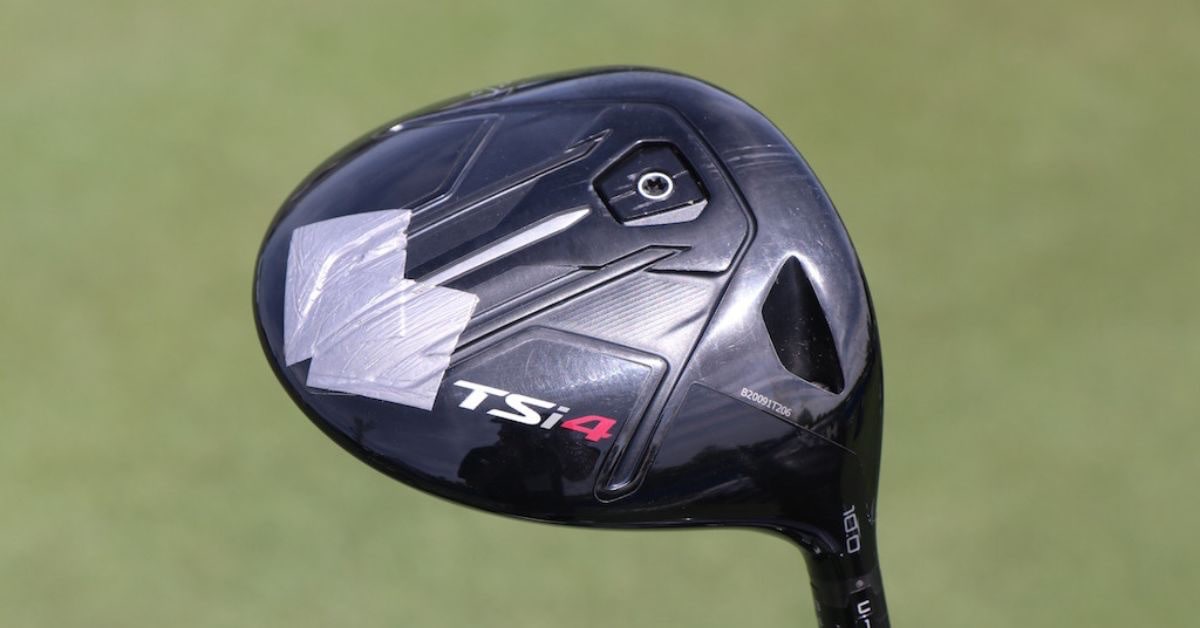With the driver, golfers can often get caught up in the idea of gaining speed.
However, distance gains can often be found by changing other properties — such as reducing spin rates, optimizing forgiveness, and altering ball flight.
One such way to change these properties is by adding weight to the driver head.
Today, I’ll address the effects of adding weight to your driver head. Then, I’ll guide you through the step-by-step process of increasing clubhead weight.
The benefits are shocking — let’s jump right in!
Effects of Adding Weight to Driver Head
Adding weight to the driver head can increase club speed and distance, produce a higher launch angle, and even improve forgiveness. Changing the driver head weight can also impact ball flight, allowing you to counteract slices or hooks by altering the horizontal position of the added weight.
Simply put, adding weight to the driver head will affect five key properties:
- Distance
- Launch Angle
- Forgiveness
- Ball Flight
- Feel & Acoustics
Next, I’ll cover these in some more detail.
Distance
Firstly, adding weight to the driver head can improve distance.
By positioning lead tape on the front portion of the sole near the clubface, you can reduce spin rates. This creates a lower, more penetrating ball flight.
When you reduce the spin and overall trajectory of the ball flight, you’ll be able to keep the ball lower, while allowing for plenty of rollout on the fairway.
At the same time, fine-tuning the position of the weight can actually increase your swing speed — resulting in greater ball speeds and more distance.
Use a launch monitor to determine if you’re increasing speed and distance, or if these changes have a negative impact. It’s a game of trial and error!
Bryson DeChambeau — one of the longest hitters in the game — has frequently added weight to his driver head in the search for extra yards of the tee.
For the 2021 Masters, he used a custom Cobra RadSpeed driver adorned with several strips of lead tape to fine-tune the weight distribution for his swing.

Launch Angle
Also, adding weight to the driver can alter the launch angle of your tee shots.
If you’re struggling with high ball flights, adding weight closer to the face of the driver will reduce the launch angle by pushing the center of gravity forwards.
Conversely, if you tend to hit the ball with an excessively low trajectory, adding weight to the rear portion of the sole will increase the launch angle.
For many golfers, the ability to adjust ball flight can be a great benefit when trying to optimize distance with their driver swing.
PRO TIP: Adding weight closer to the face of the driver will reduce the launch angle, while adding weight to the rear portion of the sole will increase the launch angle.
Forgiveness
Fine-tuning the weight of your driver head can also add forgiveness.
If you’re lacking forgiveness with your drives, it’s generally a good idea to add lead tape to the rear portion of the sole — away from the clubface.
In effect, this increases the launch angle while increasing the MOI, which helps keep the club stable through impact for better contact and flight.

Feel & Acoustics
With golf clubs, feel is often connected to the sound the club makes at impact.
Adding weight to your driver head can alter the feel and acoustics of the club upon contact with the ball. This can go one of two ways — better or worse.
Every time I’ve played with a slightly heavier driver head, the feel has felt a little more solid at impact coupled with a slightly deeper tone.
Fortunately, lead tape isn’t a permanent solution. That way, you can see how your driver feels and sounds after adding the weight, then make a decision.
Ball Flight
Finally, adding weight to the driver can also impact the horizontal ball flight.
Depending on where you place the weight, the overall ball flight can change. If you want to hit a draw, fade or just stick to a straight shot, the position of the weight in the clubhead can make all the difference.
Adding weight to the heel will counteract a slice and encourage a draw bias.
This is because it shifts the center of gravity closer to the toe, preventing the clubface from opening at the point of contact.
Adding weight to the toe will counteract a hook and encourage a fade bias.
Once again, this alters the CG and prevents the face from closing at impact.
Alex Elliott demonstrates this concept in the video below:
How to Add Weight to Your Driver Head
Some modern drivers feature lots of adjustability. This allows for weight to be moved in both the vertical and horizontal plane on the sole of the club.
However, for those with drivers that have minimal adjustability, the simplest way to add weight to your driver head is by using strips of lead tape.
PROS
+ Adds 2 grams per inch
+ Soft and easy to cut
+ Self-adhesive backing
CONS
– Limited amount of weight to add
Before You Start
To add lead tape to your driver, you need the following materials:
- Driver head
- Lead tape
- Scissors
- Cloth or paper towel
- Gloves
Let’s dive into the step-by-step process.
Step 1: Choose Weight
First, you need to decide where to add the lead tape, and how much to apply.
A 2-inch strip of lead tape adds about 1 swing weight point or around 4 grams.
This means you can change your club from a D1 to a D2 or equivalent.
It’s often recommended to change your driver’s head weight to only one swing weight at a time. You can always add more tape if you feel it’s necessary.
Step 2: Club Cleaning
Next, you need to make sure the driver head is clean before applying the tape.
Lead tape falls off over time, but you may as well start by wiping the driver’s head down and ensuring it’s ready for the tape.
Step 3: Apply the Lead Tape
Peel off the adhesive backing, and apply the lead tape to the sole of the driver.
The driver will perform differently according to the position of the lead tape.
Closer to the heel adds a draw bias, and closer to the toe adds a fade bias.
Likewise, adding weight closer to the face decreases the launch angle while adding to the rear portion of the sole will increase the launch angle by reducing CG.
If you don’t like seeing the lead tape, apply it to the sole of the club. It will wear out a little sooner, but you still will still get plenty of rounds in.
PRO TIP: When applying lead tape to the driver head, make sure that you push down firmly. This is where you may want to wear rubber gloves, to prevent making direct contact with the lead.
Step 4: Test & Fine-Tune
Test your weight adjustments for a couple of rounds or at the range to see how it alters your performance. Then, make adjustments accordingly.
Fortunately, it’s very easy to add and remove tape as you wish. That way, you can fine-tune the positioning based on your personal swing preferences.
Check out the video below by The Mobile Clubmaker for a full demonstration:



